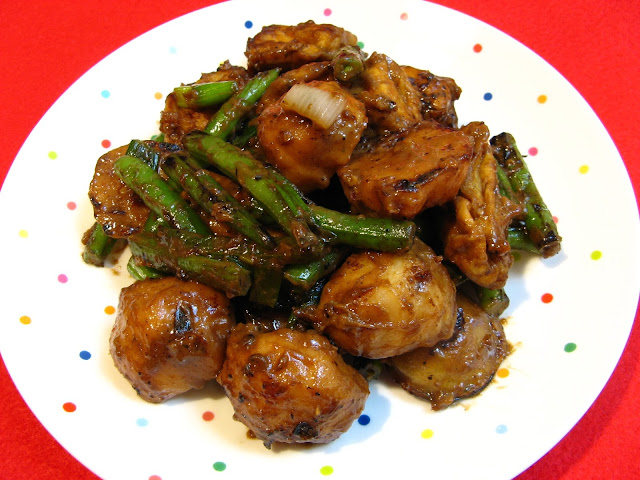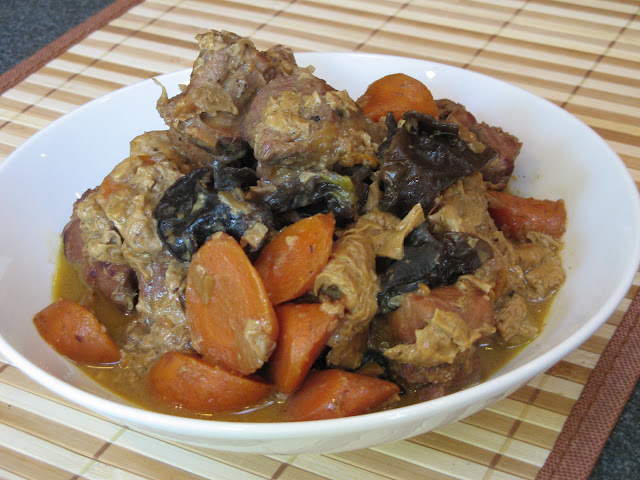Fermented bean curd is the basis for the sauce for this
dish. I used a fermented bean curd with chili, but a regular version can be
substituted if you prefer the dish without any spiciness. The quantity (i.e.
the number of cakes) to use is a personal preference, so feel free to increase
or decrease the amount used. Fresh cloud ear fungus is available at your local
Asian market. If fresh is not available, dried can be substituted. Just
remember that dried cloud ear fungus expands greatly once rehydrated, so use a
smaller amount of the dried than fresh.
Enjoy!

















